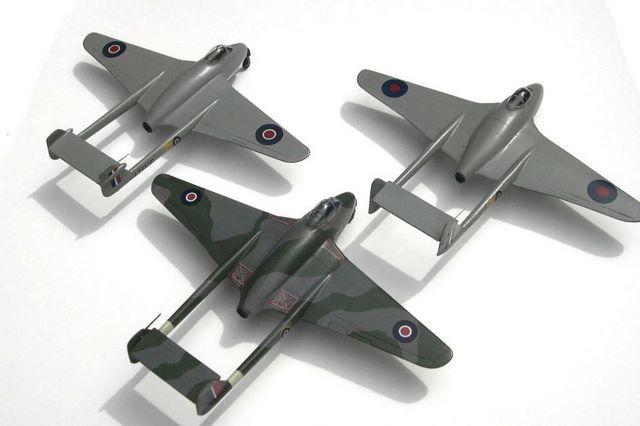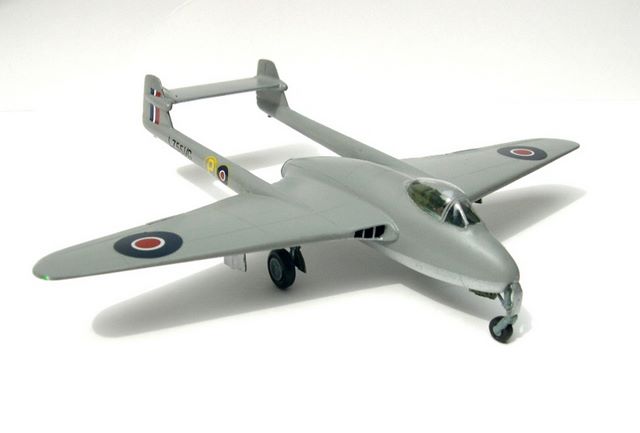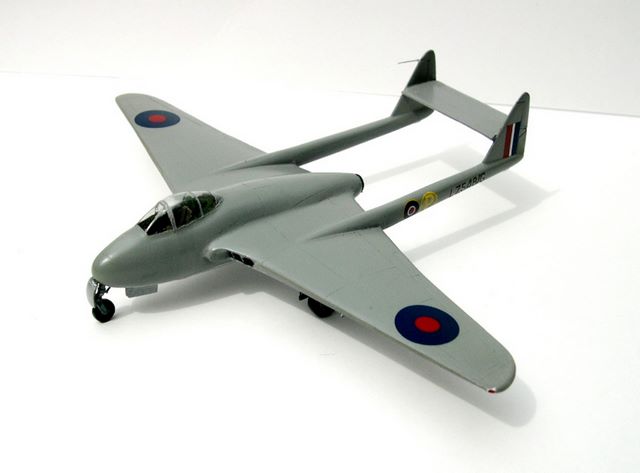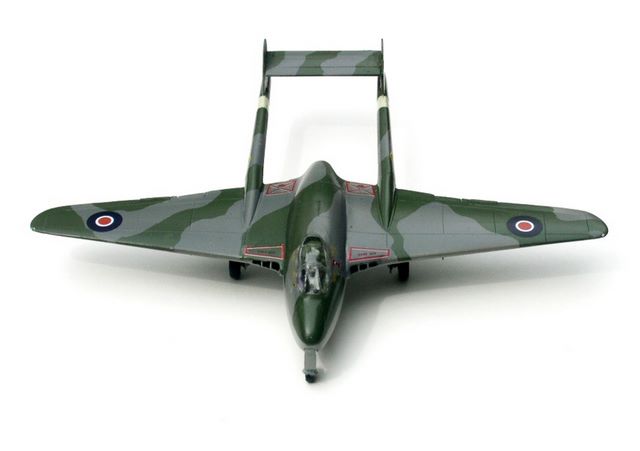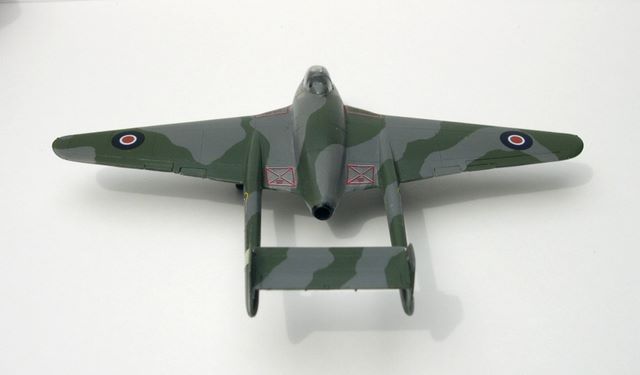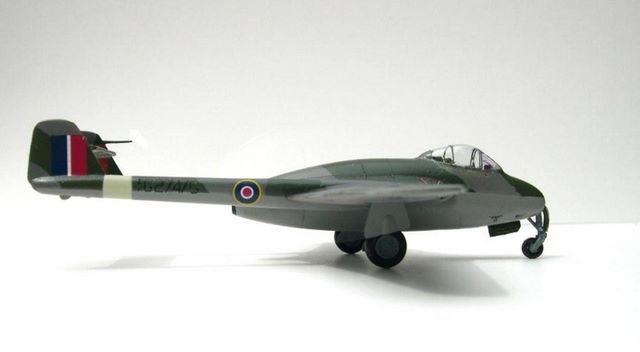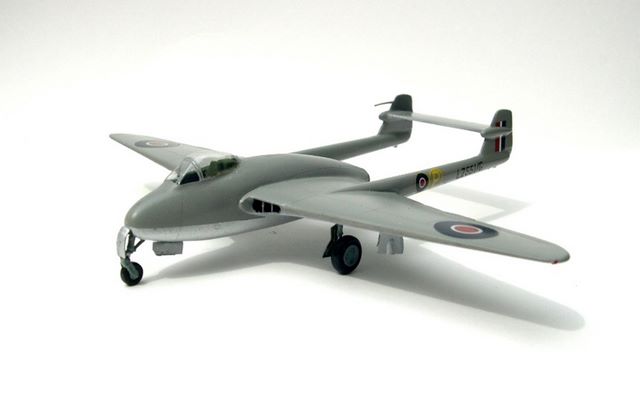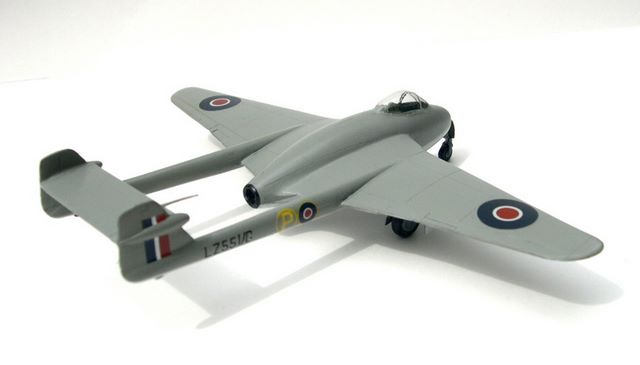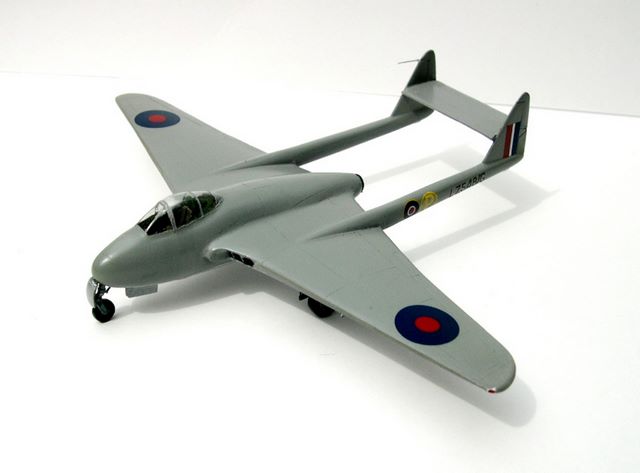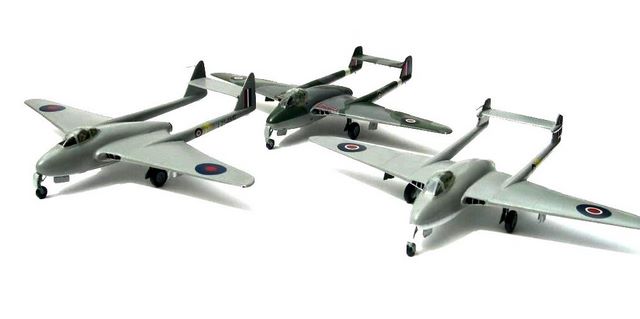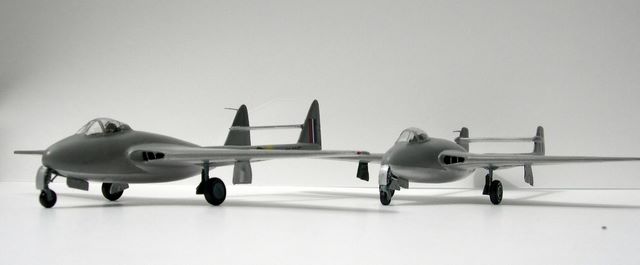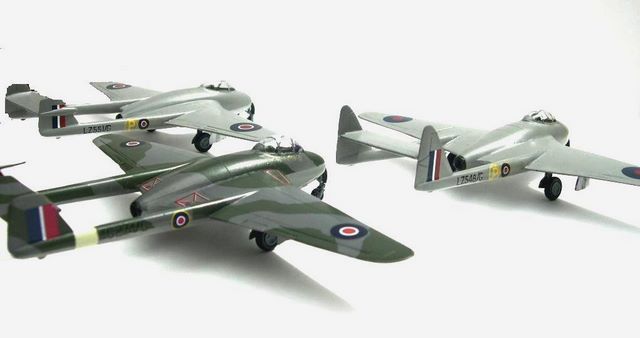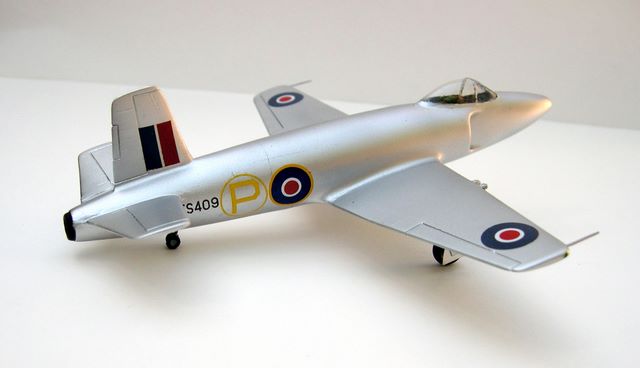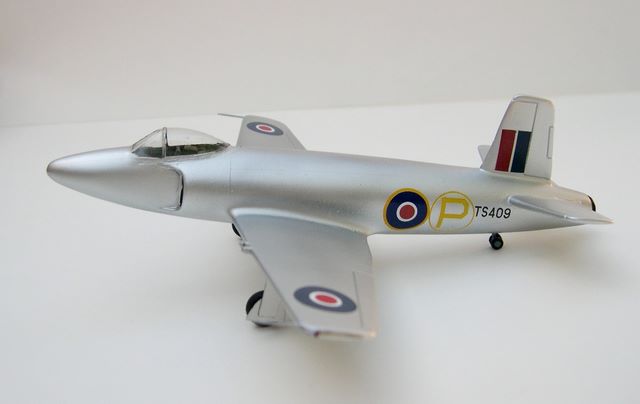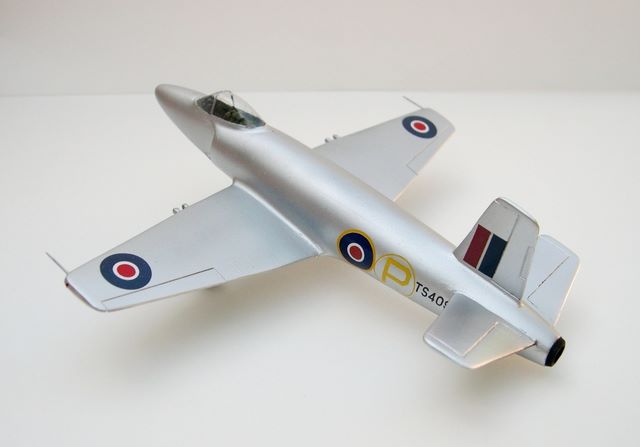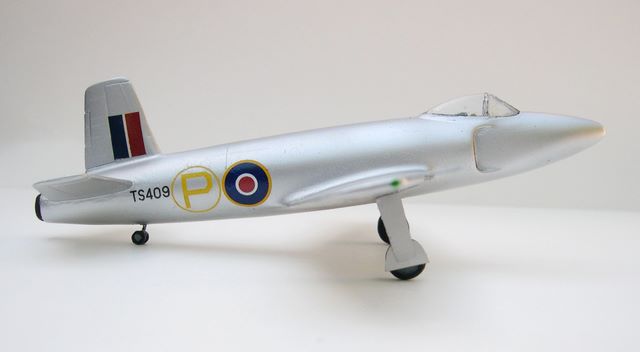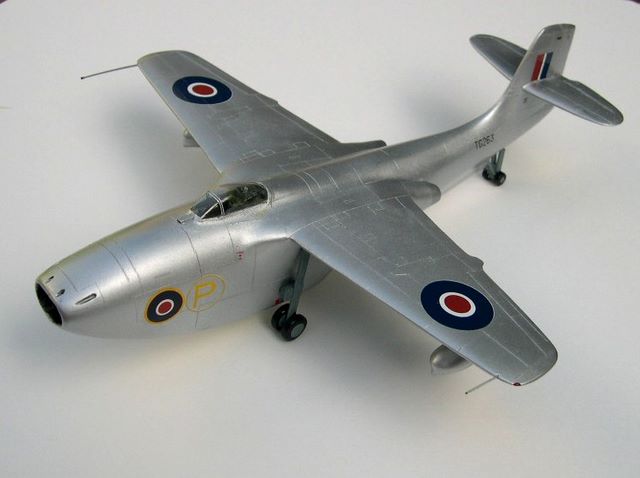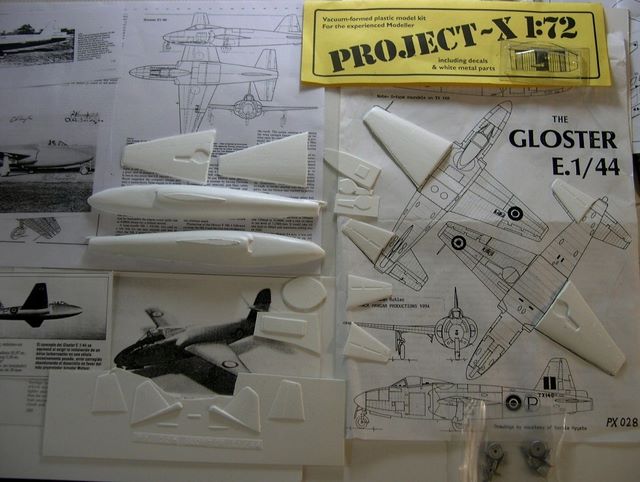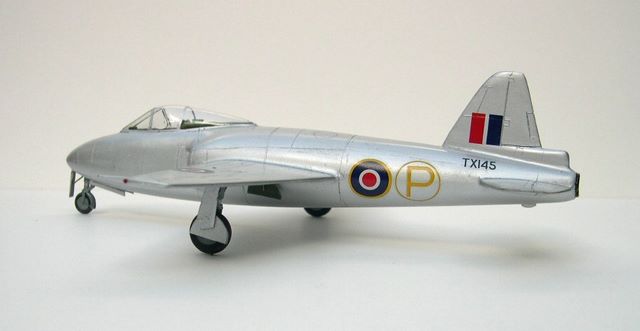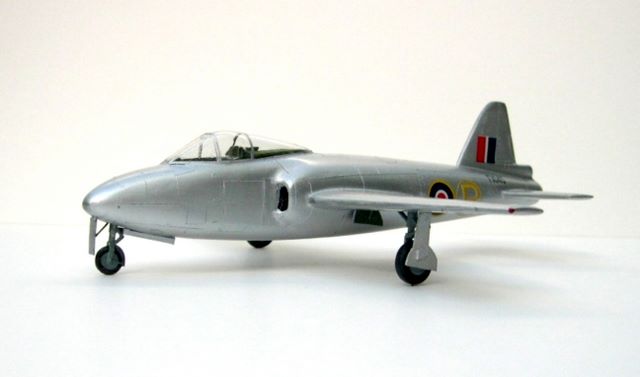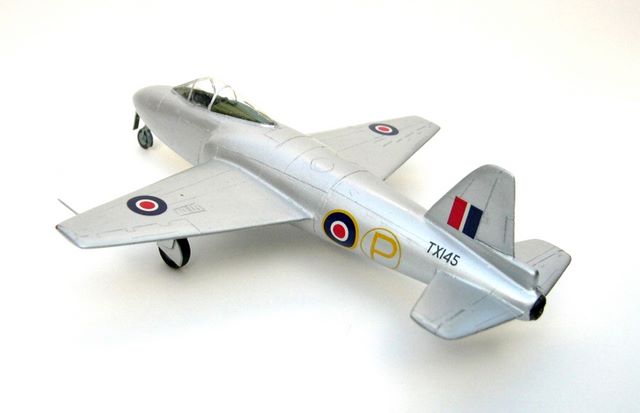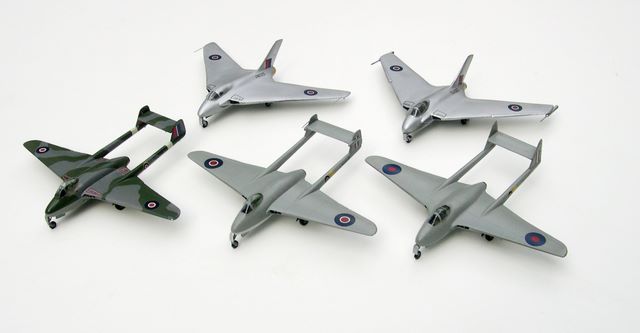Part 2: de Havilland and Others
by Raul Hrubisko
Back to Early British Jets – Part 1: Gloster’s Contribution
de Havilland DH 100 Vampire
On April 22nd, 1942 de Havilland received a go-ahead for construction of two prototypes of its own jet design. The first prototype originally called Spider Crab , LZ548/G, flown on 20th September 1943 piloted by Geoffrey de Havilland Jr. Powered by a 2,700lb thrust Halford H.1 engine, it was airborne for 30 minutes. During this time the test pilot found some instability above 400 mph.
The second prototype LZ551/G was the second Spider Crab to fly on 17th March 1944. It had a revised shape fin and rudders. It was selected to carry out trials for Vampire suitability as a naval jet fighter for operating from aircraft carrier. I has a different canopy.
The LZ548 and LZ551 were made from an Airfix kit with the corresponding scratch build modifications on the tail planes. I made my own vacuum formed canopies.
The third Vampire that I made was the TG274/G which was the first production Vampire flew from Salisbury on 20th April 1945 and was delivered to Boscombe Down during June 1945.
Javier Planells kindly donated a Marivox conversion to build this model.
The Vampire was did not see operational service during WWII, which is the reason why my Vampire collection ends at this point.
Other Experimental Types of WW2 Origin
The following aircraft flew after the end of the conflict but I decided to build them because their development or testing was begun during the War.
Supermarine Type 392
Three prototypes of this aircarft were made under the specification E.10/44. These carried the serial numbers TS409, TS413, TS416. This aircraft displayed a large degree of commonality with the propeller-driven Spiteful. The first prototype flew in the middle of 1946. It was the first venture of Supermarine in the jet aircraft area.
I built the TS409 from an old Supermarine Attacker Frog kit. I had to reduce the fuselage by 5 mm and produce a new canopy.
SARO SR.A1
Inspired by the developments of the war against Japan in the Pacific, in 1943 Sir Arthur Rouge of Saunders Roe conceived the idea of a small jet-propelled flying boat fighter.
Three prototype allocated serial TG263; TG267 and TG271 were accepted under the specification E.6/44 but the design had appeared too late in the war. However, the first machine TG263 was built. The maiden flight was made on July 16th, 1947.
The only kit of this unique aircraft available some years ago was the vacuum formed kit of Formaplane which unfortunately was very basic. After a lot of work I was happy, even completely satisfied with the result. For those interested in modelling the SR.A1, another. much better kit is available now from Planet Models.
Gloster E.1/44
With the experience acquired after the Gloster Whittle and the Gloster Meteor, this company proposed in January 1942 a refined jet fighter with a pressurised canopy and a maximum speed of 485 mph at 30.000 feet. Specification E.1/44 was written around it.
In July 1947 as the first aircraft was being delivered by road to Boscombe Down for testing. Unfortunately the vehicle jack-knifed under transport and the SM809 was damaged beyond repair. Work was speeded up on the second airframe TX145, which took to the air on March 9th, 1948 flown by Bill Waterton. The aircraft performed quite satisfactorily.
This model was made using a vacuum form kit from Project X.
de Havilland DH 108 Swallow Lo Speed TG283 (P)
de Havilland DH 108 Swallow High Speed VW120 (P)
Armstrong Whitworth A.W. 52 TS363 (P)
These three models were included in my previously published article Tailless and Canard Experimental Aircraft of the RAF.
Miles M 39A Jet Bomber U0245 (P)
Miles M 52 (Project E24/43)
These two aircraft only reached a project stage and therefore never flew. They were included in another of my previous articles – 47 Miles of Scratchbuilding.
Acknowledgements
I’d like to extend my warm thank you to the following friends.
- Pablo Zieger, for providing us with kits, information and support.
- Jonathan Davis, for sending a lot of valuable articles and resin pieces like engines
- Gabriel Morales, for providing us with kits
- Jorge Leonardi and Javier Planells for providing Kits for this series
This article was originally published in IPMS Stockholms Magazine in June 2008
